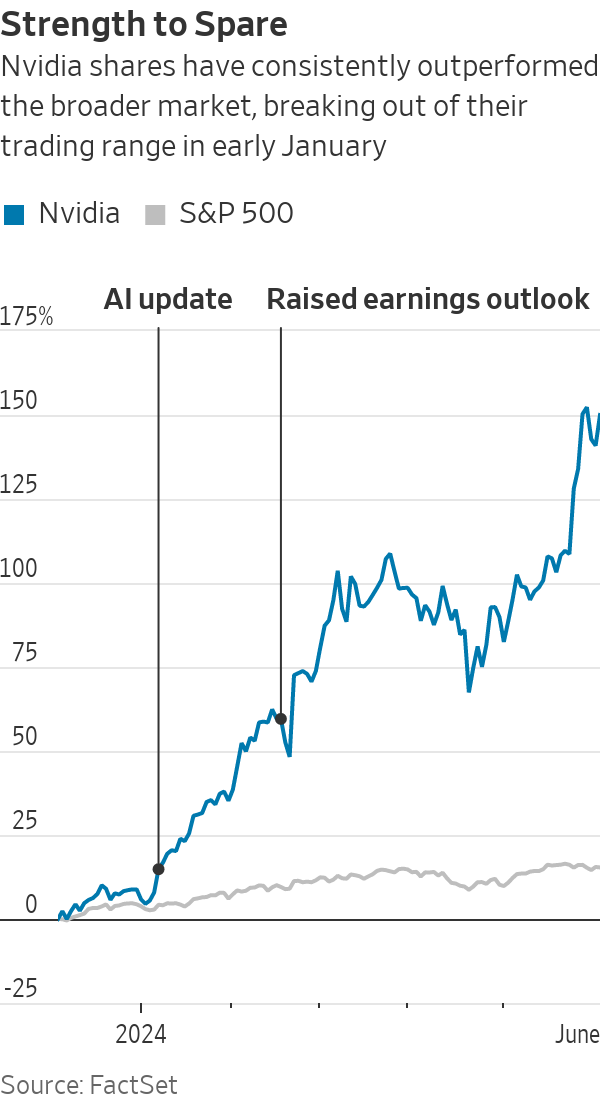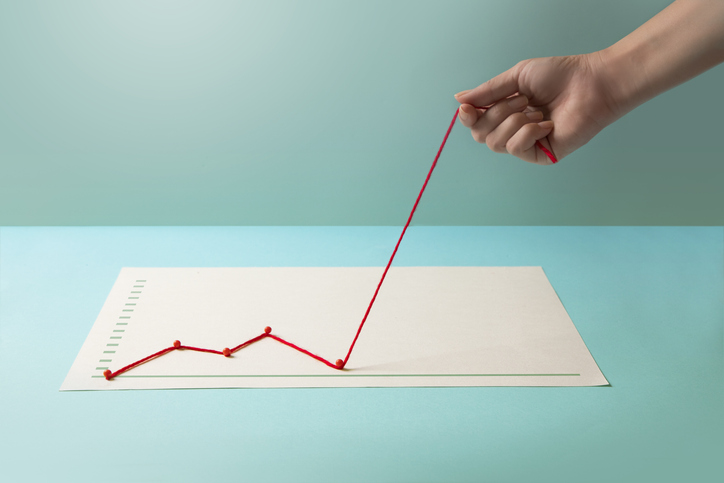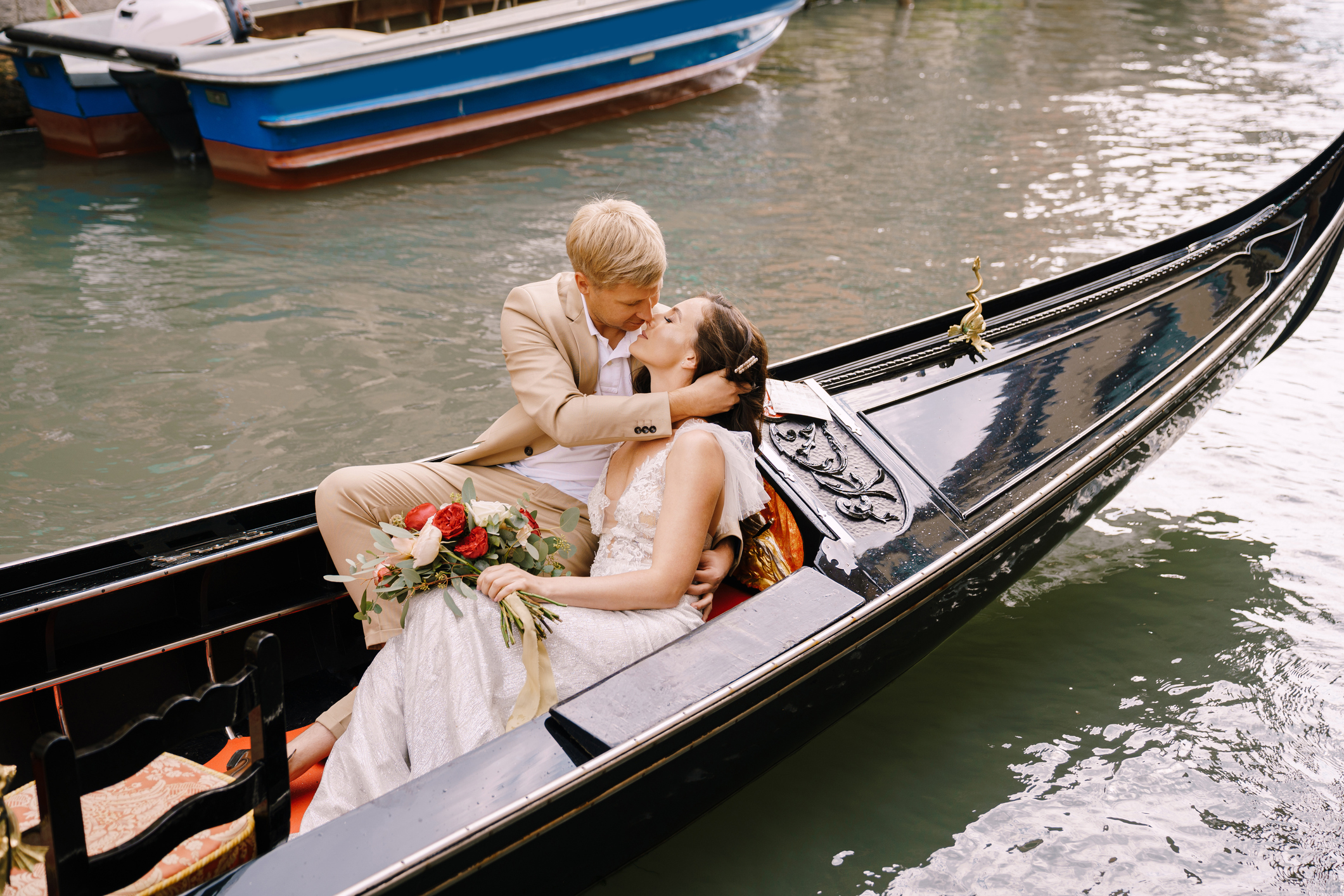To Find Winning Stocks, Investors Often Focus on the Laggards. They Shouldn’t.
These stocks are getting hit for a reason. Instead, focus on stocks that show ‘relative strength.’ Here’s how.
A lot of investors get stock-picking wrong before they even get started: Instead of targeting the top-performing stocks in the market, they focus on the laggards—widely known companies that look as if they are on sale after a period of stock-price weakness.
But these weak performers usually are going down for good reasons, such as for deteriorating sales and earnings, market-share losses or mutual-fund managers who are unwinding positions.
Decades of Investor’s Business Daily research shows these aren’t the stocks that tend to become stock-market leaders. The stocks that reward investors with handsome gains for months or years are more often already the strongest price performers, usually because of outstanding earnings and sales growth and increasing fund ownership.
Of course, many investors already chase performance and pour money into winning stocks. So how can a discerning investor find the winning stocks that have more room to run?
Enter “relative strength”—the notion that strength begets more strength. Relative strength measures stocks’ recent performance relative to the overall market. Investing in stocks with high relative strength means going with the winners, rather than picking stocks in hopes of a rebound. Why bet on a last-place team when you can wager on the leader?
One of the easiest ways to identify the strongest price performers is with IBD’s Relative Strength Rating. Ranked on a scale of 1-99, a stock with an RS rating of 99 has outperformed 99% of all stocks based on 12-month price performance.
How to use the metric
To capitalize on relative strength, an investor’s search should be focused on stocks with RS ratings of at least 80.
But beware: While the goal is to buy stocks that are performing better than the overall market, stocks with the highest RS ratings aren’t always the best to buy. No doubt, some stocks extend rallies for years. But others will be too far into their price run-up and ready to start a longer-term price decline.

Thus, there is a limit to chasing performance. To avoid this pitfall, investors should focus on stocks that have strong relative strength but have seen a moderate price decline and are just coming out of weeks or months of trading within a limited range. This range will vary by stock, but IBD research shows that most good trading patterns can show declines of up to one-third.
Here, a relative strength line on a chart may be helpful for confirming an RS rating’s buy signal. Offered on some stock-charting tools, including IBD’s, the line is a way to visualize relative strength by comparing a stock’s price performance relative to the movement of the S&P 500 or other benchmark.
When the line is sloping upward, it means the stock is outperforming the benchmark. When it is sloping downward, the stock is lagging behind the benchmark. One reason the RS line is helpful is that the line can rise even when a stock price is falling, meaning its value is falling at a slower pace than the benchmark.
A case study
The value of relative strength could be seen in Google parent Alphabet in January 2020, when its RS rating was 89 before it started a 10-month run when the stock rose 64%. Meta Platforms ’ RS rating was 96 before the Facebook parent hit new highs in March 2023 and ran up 65% in four months. Abercrombie & Fitch , one of 2023’s best-performing stocks, had a 94 rating before it soared 342% in nine months starting in June 2023.
Those stocks weren’t flukes. In a study of the biggest stock-market winners from the early 1950s through 2008, the average RS rating of the best performers before they began their major price runs was 87.
To see relative strength in action, consider Nvidia . The chip stock was an established leader, having shot up 365% from its October 2022 low to its high of $504.48 in late August 2023.
But then it spent the next four months rangebound—giving up some ground, then gaining some back. Through this period, shares held between $392.30 and the August peak, declining no more than 22% from top to bottom.
On Jan. 8, Nvidia broke out of its trading range to new highs. The previous session, Nvidia’s RS rating was 97. And that week, the stock’s relative strength line hit new highs. The catalyst: Investors cheered the company’s update on its latest advancements in artificial intelligence.
Nvidia then rose 16% on Feb. 22 after the company said earnings for the January-ended quarter soared 486% year over year to $5.16 a share. Revenue more than tripled to $22.1 billion. It also significantly raised its earnings and revenue guidance for the quarter that was to end in April. In all, Nvidia climbed 89% from Jan. 5 to its March 7 close.
And the stock has continued to run up, surging past $1,000 a share in late May after the company exceeded that guidance for the April-ended quarter and delivered record revenue of $26 billion and record net profit of $14.88 billion.
Ken Shreve is a senior markets writer at Investor’s Business Daily. Follow him on X @IBD_KShreve for more stock-market analysis and insights, or contact him at ken.shreve@investors.com .
 Copyright 2020, Dow Jones & Company, Inc. All Rights Reserved Worldwide. LEARN MORE
Copyright 2020, Dow Jones & Company, Inc. All Rights Reserved Worldwide. LEARN MORE
This stylish family home combines a classic palette and finishes with a flexible floorplan
Just 55 minutes from Sydney, make this your creative getaway located in the majestic Hawkesbury region.
Impact investing is becoming more mainstream as larger, institutional asset owners drive more money into the sector, according to the nonprofit Global Impact Investing Network in New York.
In the GIIN’s State of the Market 2024 report, published late last month, researchers found that assets allocated to impact-investing strategies by repeat survey responders grew by a compound annual growth rate (CAGR) of 14% over the last five years.
These 71 responders to both the 2019 and 2024 surveys saw their total impact assets under management grow to US$249 billion this year from US$129 billion five years ago.
Medium- and large-size investors were largely responsible for the strong impact returns: Medium-size investors posted a median CAGR of 11% a year over the five-year period, and large-size investors posted a median CAGR of 14% a year.
Interestingly, the CAGR of assets held by small investors dropped by a median of 14% a year.
“When we drill down behind the compound annual growth of the assets that are being allocated to impact investing, it’s largely those larger investors that are actually driving it,” says Dean Hand, the GIIN’s chief research officer.
Overall, the GIIN surveyed 305 investors with a combined US$490 billion under management from 39 countries. Nearly three-quarters of the responders were investment managers, while 10% were foundations, and 3% were family offices. Development finance institutions, institutional asset owners, and companies represented most of the rest.
The majority of impact strategies are executed through private-equity, but public debt and equity have been the fastest-growing asset classes over the past five years, the report said. Public debt is growing at a CAGR of 32%, and public equity is growing at a CAGR of 19%. That compares to a CAGR of 17% for private equity and 7% for private debt.
According to the GIIN, the rise in public impact assets is being driven by larger investors, likely institutions.
Private equity has traditionally served as an ideal way to execute impact strategies, as it allows investors to select vehicles specifically designed to create a positive social or environmental impact by, for example, providing loans to smallholder farmers in Africa or by supporting fledging renewable energy technologies.
Future Returns: Preqin expects managers to rely on family offices, private banks, and individual investors for growth in the next six years
But today, institutional investors are looking across their portfolios—encompassing both private and public assets—to achieve their impact goals.
“Institutional asset owners are saying, ‘In the interests of our ultimate beneficiaries, we probably need to start driving these strategies across our assets,’” Hand says. Instead of carving out a dedicated impact strategy, these investors are taking “a holistic portfolio approach.”
An institutional manager may want to address issues such as climate change, healthcare costs, and local economic growth so it can support a better quality of life for its beneficiaries.
To achieve these goals, the manager could invest across a range of private debt, private equity, and real estate.
But the public markets offer opportunities, too. Using public debt, a manager could, for example, invest in green bonds, regional bank bonds, or healthcare social bonds. In public equity, it could invest in green-power storage technologies, minority-focused real-estate trusts, and in pharmaceutical and medical-care company stocks with the aim of influencing them to lower the costs of care, according to an example the GIIN lays out in a separate report on institutional strategies.
Influencing companies to act in the best interests of society and the environment is increasingly being done through such shareholder advocacy, either directly through ownership in individual stocks or through fund vehicles.
“They’re trying to move their portfolio companies to actually solving some of the challenges that exist,” Hand says.
Although the rate of growth in public strategies for impact is brisk, among survey respondents investments in public debt totaled only 12% of assets and just 7% in public equity. Private equity, however, grabs 43% of these investors’ assets.
Within private equity, Hand also discerns more evidence of maturity in the impact sector. That’s because more impact-oriented asset owners invest in mature and growth-stage companies, which are favored by larger asset owners that have more substantial assets to put to work.
The GIIN State of the Market report also found that impact asset owners are largely happy with both the financial performance and impact results of their holdings.
About three-quarters of those surveyed were seeking risk-adjusted, market-rate returns, although foundations were an exception as 68% sought below-market returns, the report said. Overall, 86% reported their investments were performing in line or above their expectations—even when their targets were not met—and 90% said the same for their impact returns.
Private-equity posted the strongest results, returning 17% on average, although that was less than the 19% targeted return. By contrast, public equity returned 11%, above a 10% target.
The fact some asset classes over performed and others underperformed, shows that “normal economic forces are at play in the market,” Hand says.
Although investors are satisfied with their impact performance, they are still dealing with a fragmented approach for measuring it, the report said. “Despite this, over two-thirds of investors are incorporating impact criteria into their investment governance documents, signalling a significant shift toward formalising impact considerations in decision-making processes,” it said.
Also, more investors are getting third-party verification of their results, which strengthens their accountability in the market.
“The satisfaction with performance is nice to see,” Hand says. “But we do need to see more about what’s happening in terms of investors being able to actually track both the impact performance in real terms as well as the financial performance in real terms.”
This stylish family home combines a classic palette and finishes with a flexible floorplan
Just 55 minutes from Sydney, make this your creative getaway located in the majestic Hawkesbury region.






















